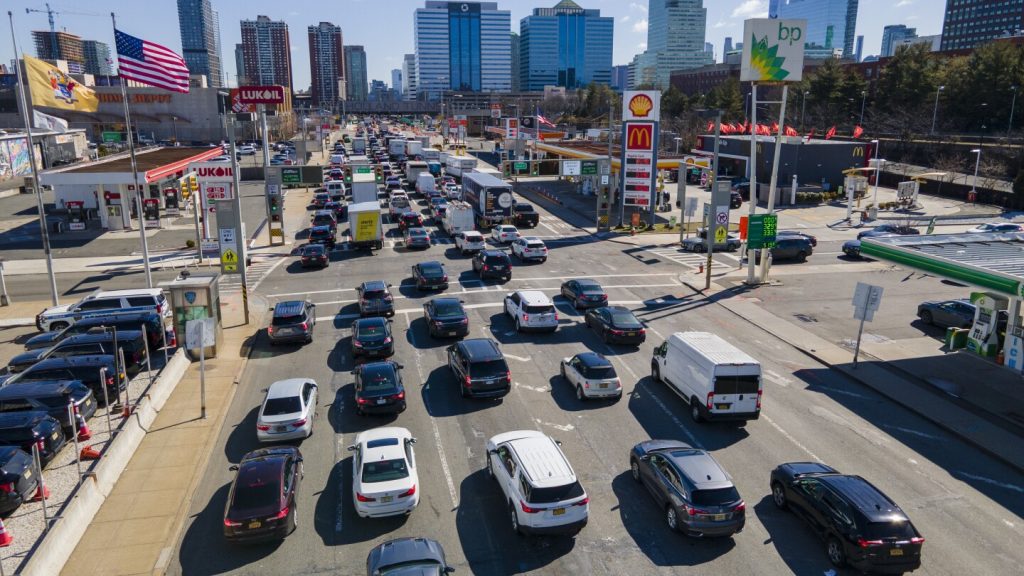New York City is set to become the first U.S. city to implement congestion tolls on drivers entering its central business district, as the Metropolitan Transportation Authority board approved a $15 fee for most motorists heading into Manhattan. The plan, expected to go into effect in June, aims to reduce congestion, speed up public transportation, improve air quality, and raise funds to improve the subway system. The tolls will vary based on the time of day and the size of the vehicle, with higher fees for larger vehicles and lower fees for late-night entries.
The state Legislature approved the congestion pricing plan in 2019, with the goal of raising $1 billion per year to fund public subway and bus systems for the city’s 4 million daily riders. The boundaries of the congestion zone were established to cover the busiest part of Manhattan, south of Central Park, scaling back earlier proposals that included a larger area up to 86th Street. Tolls will vary based on the vehicle type and entry time, ranging from $1.75 for motorcycles during overnight hours to $36 for sightseeing buses and trucks with trailers during the day.
Visitors without E-ZPasses will pay higher tolls, and license plate readers will be used to identify drivers for billing purposes. Taxis will charge passengers $1.25 per trip within the congestion zone, while app-based rides will charge $2.50. Despite requests for exemptions from over 100 categories of drivers during the public comment period, only a few exceptions were granted, including emergency vehicles, specialized city vehicles, buses with public routes or school contracts, vehicles carrying disabled people, and certain low-income commuters who are eligible for discounts and tax credits.
The plan has faced legal challenges from small business owners and the state of New Jersey, but if it survives these challenges, New York City will become the first in the U.S. to implement a congestion pricing scheme. Similar schemes have been successful in cities like London, Stockholm, Milan, and Singapore, and in 2017, Virginia officials implemented a toll system on Interstate 66 near Washington, D.C. The implementation of congestion tolls in New York City is seen as a crucial step towards reducing traffic congestion, improving public transportation, and addressing environmental concerns in one of the busiest cities in the world.
Overall, the decision to implement congestion tolls in New York City represents a significant step towards addressing the challenges of traffic congestion, air pollution, and funding for public transportation. While some groups have raised concerns about the tolls, the majority of drivers will be subject to the new fees in an effort to reduce traffic, improve public transportation, and raise necessary funds for subway and bus systems. The success of this plan could serve as a model for other cities looking to address similar challenges and improve the overall quality of urban transportation systems.


